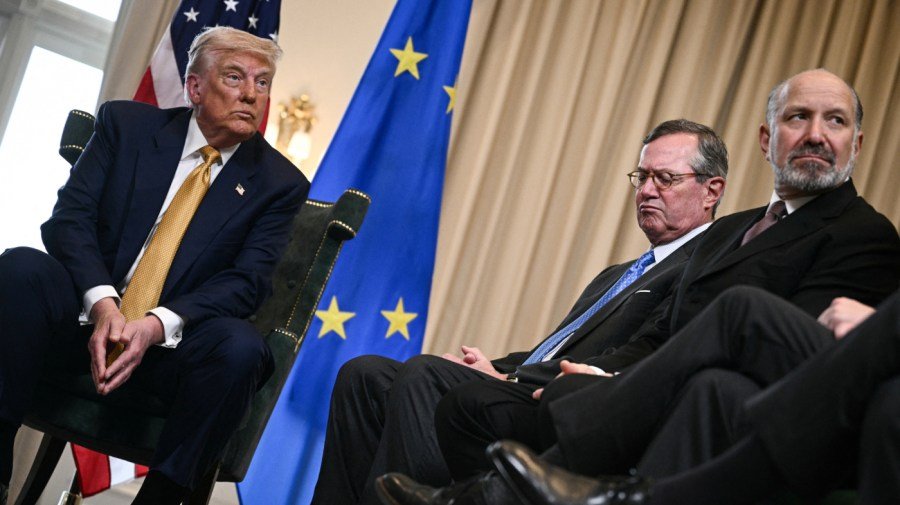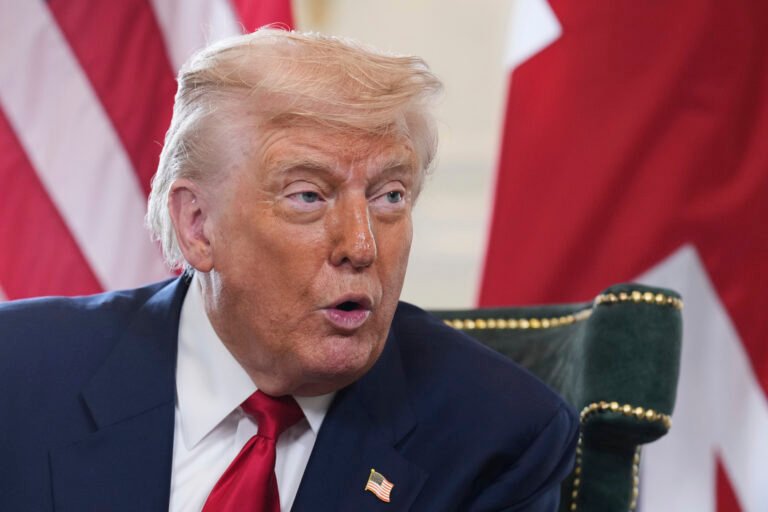
With the Aug. 1 trade deadline at hand, deals with Japan and the European Union have been announced that give investors greater clarity on what President Trump is seeking from key trading partners.
Trump agreed to lower Japan’s reciprocal tariff rate to 15 percent from 25 percent last week in return for a commitment by Japan to invest $550 billion into the U.S. and to open its market to U.S. goods.
The European Union also agreed to 15 percent tariffs on most of its exports to the U.S., which was down from Trump’s prior threat of 30 percent. In return, the EU reportedly also agreed to purchase $750 billion in energy and to invest $600 billion in the U.S. on top of existing investments.
While the framework for the two deals was similar, the reaction in Japan was more favorable than in Europe. The deal Japan struck was attractive because it meant Japanese carmakers would be subject to 15 percent tariffs instead of the 25 percent tariffs levied on cars and auto parts.
Politico reports that the agreement is giving domestic automakers “heartburn,” because U.S. car manufactures have taken hits from duties on components they import from Mexico and Canada.
In comparison, EU leaders were less enthusiastic about the deal they struck, and European stocks and the euro sold off on the news.
As the editorial board of the Financial Times put it, “The world’s largest trading bloc may have dodged higher tariffs, but it has also rubber stamped the U.S. president’s new world order.”
For the time being at least, investors appear comforted that the worst of the trade war is over, as trading partners have refrained from retaliating against U.S. actions. In this respect, it is playing out differently than during the Great Depression.
That said, the tariff hikes being contemplated are the largest and most extensive since the 1930s. At an AI summit in Washington last week, Trump suggested he would not go below a 15 percent threshold as he sets reciprocal tariffs for the Aug. 1 deadline. Previously, 10 percent was the lower boundary.
The latest estimate of the Yale Budget Lab model of the average effective U.S. tariff rate is approximately 17 percent, up from 2 percent at the start of this year.
However, the Financial Times reports that the tariff rate based on actual trade is about one-half of the effective rate, because importers stockpiled goods ahead of the April 2 “Liberation Day” announcement.
Meanwhile, there is an ongoing debate about who is paying for the tariffs.
The Council of Economic Advisors has downplayed the effect of tariffs by claiming that import prices have dipped faster than overall goods prices since February. However, the U.S. import price index constructed by the Bureau of Labor Statistics measures the prices of imported goods as they cross U.S. borders, before tariffs or other taxes are applied.
The Wall Street Journal reports that most of Trump’s tariffs are being picked up by corporate America. U.S. companies had held off passing the cost of the tariffs on to consumers by running down inventories that accumulated before the tariff hikes and by taking cost-saving measures. However, they will eventually have to raise prices to consumers to bolster profits.
For example, in its second quarter earnings report, General Motors indicated the full year tariff impact could reach $4 billion to 5 billion. Stellantis put its tariff-related loss at $1.14 billion to $1.7 billion.
Beyond the size and scope of the tariff hikes, the main threat to the U.S. economy stems from the unprecedented economic policy uncertainty associated with tariffs and prospective large federal budget imbalances.
The deals that have been announced are agreements in principle that can be amended at any time. Politico reports there are already signs that the EU, Japan and other governments cannot guarantee the private-sector investments they have promised.
Meanwhile, deals have yet to be struck with three of America’s largest trade partners: China, Canada and Mexico.
Treasury Secretary Scott Bessent met with Chinese counterparts this week, and the trade truce that expires on Aug. 12 is expected to be extended. However, no breakthroughs were announced.
In comparison, Trump was less optimistic about a deal with Canada. He commented that “I think Canada will be one where they’ll just pay tariffs, not really a negotiation.”
The outcome of the tariff negotiations ultimately hinges on Trump making a final decision about what he wants to achieve.
Robert Zoellick, former U.S. Trade Representative for George W. Bush, was asked in a Bloomberg interview if there was anything Trump has done that was unexpected with respect to trade policy.
His response was that Trump has greater self-confidence now than during his first term, he has surrounded himself with loyalists, and he believes in “chaotic protectionism.” Zoellick observes: “He likes the uncertainty. Businesses don’t like the uncertainty. But for him, it’s part of the negotiating model.”
This invites the question of how businesses can make long-term decisions when they are unsure where economic policies are headed. A recent Bloomberg survey finds that, in every member of the G-7 advanced economies, forecasts for business investment next year are lower than when Trump took office.
My take is the U.S. economy was in a holding pattern in the first half of this year as businesses waited to see how the trade war would play out.
Although it registered 3 percent growth in the second quarter, consumer spending posted the softest growth in consecutive quarters since the pandemic. The soft patch in consumer spending and hiring by the private sector is likely to linger until there is greater clarity.
What is clear is that Trump did not chicken out in imposing punitive tariffs on America’s trading partners and ending the rules-based international trade system in place for the past 80 years.
Nicholas Sargen, Ph.D., is an economic consultant for Fort Washington Investment Advisors and is affiliated with the University of Virginia’s Darden School of Business. He has authored three books including “Investing in the Trump Era: How Economic Policies Impact Financial Markets.”


